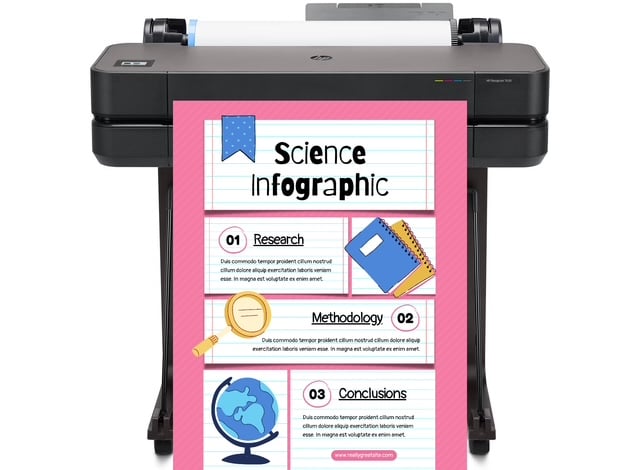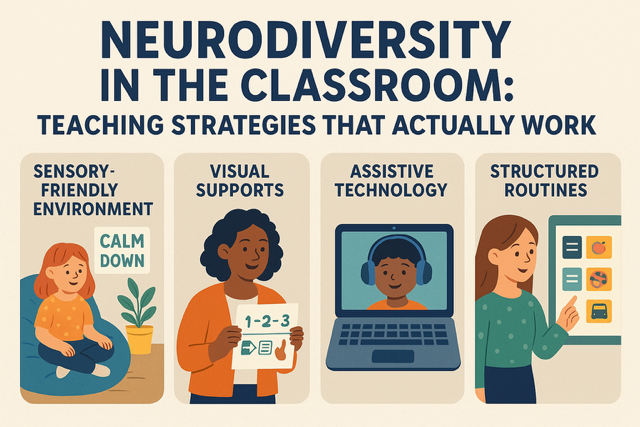
DISCOUNTED EDUCATION PRICING! CALL 1-877-891-8411. We Gladly Accept School Purchase Orders!

As classrooms become more inclusive, embracing neurodiversity is essential for fostering equitable and effective learning environments. Neurodiversity recognizes that neurological differences, such as autism, ADHD, dyslexia, and other conditions, are natural variations of the human brain. For the 2025-2026 school year, educators are prioritizing teaching strategies that support neurodivergent students while benefiting all learners. This blog explores proven, practical teaching strategies to create an inclusive classroom where every student can thrive. With a focus on evidence-based practices, these approaches are designed to enhance engagement, reduce barriers, and celebrate diverse ways of learning.
Neurodiversity in the classroom means acknowledging that students process information, communicate, and engage differently. Approximately 15-20% of students may be neurodivergent, including those with autism spectrum disorder (ASD), attention-deficit/hyperactivity disorder (ADHD), dyslexia, or sensory processing differences. Traditional teaching methods often fail to address these diverse needs, leading to disengagement or exclusion. By adopting neurodiversity-affirming strategies, teachers can create flexible, supportive environments that empower all students. Below are the top strategies for fostering neurodiversity in the classroom, backed by research and practical application.
Many neurodivergent students are sensitive to sensory stimuli, such as loud noises, bright lights, or cluttered spaces. A sensory-friendly classroom reduces overstimulation and promotes focus. This strategy benefits all students by creating a calm learning atmosphere.
How to Implement:
Evidence: A 2023 study in the Journal of Autism and Developmental Disorders found that sensory-friendly environments improved focus and reduced anxiety for autistic students by 30%.
Universal Design for Learning (UDL) is a framework that provides multiple means of engagement, representation, and expression to accommodate diverse learners. UDL ensures that lessons are accessible to all students, regardless of neurological differences.
How to Implement:
Evidence: The National Center on Universal Design for Learning reports that UDL increases student engagement by 25% and improves academic outcomes for neurodivergent learners.
Neurodivergent students, particularly those with ADHD or autism, benefit from clear, predictable routines and instructions. Ambiguity can lead to confusion or anxiety, hindering participation.
How to Implement:
Example: For a writing assignment, provide a checklist: “1. Brainstorm ideas. 2. Write a rough draft. 3. Edit with a peer.”
Evidence: A 2024 study in Educational Psychology showed that structured instructions improved task completion rates by 40% for students with ADHD.
Flexible seating allows students to choose seating that suits their sensory and attentional needs, promoting comfort and focus. This strategy supports neurodivergent students who may struggle with traditional desk setups.
How to Implement:
Evidence: A 2022 study in The Journal of Learning Spaces found that flexible seating increased on-task behavior by 35% for students with sensory processing differences.
Social-emotional learning helps students manage emotions, build relationships, and develop self-awareness. For neurodivergent students, SEL can address challenges with social cues or emotional regulation.
How to Implement:
Example: Start each day with a “check-in” circle where students share how they feel using a word or emoji.
Evidence: The Collaborative for Academic, Social, and Emotional Learning (CASEL) reports that SEL programs improve classroom behavior and academic performance by 20% for diverse learners.
Neurodivergent students often have unique strengths, such as hyperfocus, creativity, or pattern recognition. Strengths-based teaching focuses on leveraging these abilities rather than emphasizing deficits.
How to Implement:
Evidence: A 2023 study in Exceptional Children found that strengths-based approaches increased self-esteem and engagement by 28% in neurodivergent students.
Movement and hands-on activities help neurodivergent students, especially those with ADHD, stay engaged and process information. Kinesthetic learning also benefits all students by making lessons interactive.
How to Implement:
Evidence: A 2024 meta-analysis in Frontiers in Education showed that hands-on learning improved retention by 30% for students with ADHD.
Transitions between activities can be challenging for neurodivergent students, leading to anxiety or disengagement. Predictable transitions help students prepare for change and maintain focus.
How to Implement:
Evidence: A 2022 study in Journal of Special Education found that predictable transitions reduced disruptive behaviors by 25% in autistic students.
Technology can be a powerful tool for neurodivergent students, offering personalized learning experiences and accessibility features. Apps and tools tailored to diverse needs can enhance engagement and independence.
How to Implement:
Example: Apps like Notion or Kahoot can create engaging, accessible activities for all learners.
Evidence: A 2025 report from EdTech Review noted that assistive technology improved academic outcomes by 22% for neurodivergent students.
Strong teacher-student relationships are the foundation of an inclusive classroom. Neurodivergent students thrive when they feel understood and supported by their teachers.
How to Implement:
Evidence: A 2023 study in Teaching and Teacher Education found that positive teacher-student relationships increased classroom participation by 35% for neurodivergent students.
Embracing neurodiversity in the classroom creates a culture of acceptance, where every student’s unique strengths are valued. These strategies not only support neurodivergent students but also enhance learning for all, fostering a sense of belonging and academic success. By implementing sensory-friendly spaces, UDL, clear instructions, and relationship-building, teachers can break down barriers and unlock every student’s potential.
For the 2025-2026 school year, neurodiversity-affirming teaching strategies are transforming classrooms into inclusive, dynamic spaces. By creating sensory-friendly environments, leveraging strengths, and using flexible, evidence-based approaches, educators can ensure all students thrive. These strategies are not just trends—they’re proven methods that work. Start small, stay consistent, and watch your classroom become a place where every learner shines.
Let’s celebrate neurodiversity and make this school year the most inclusive yet!